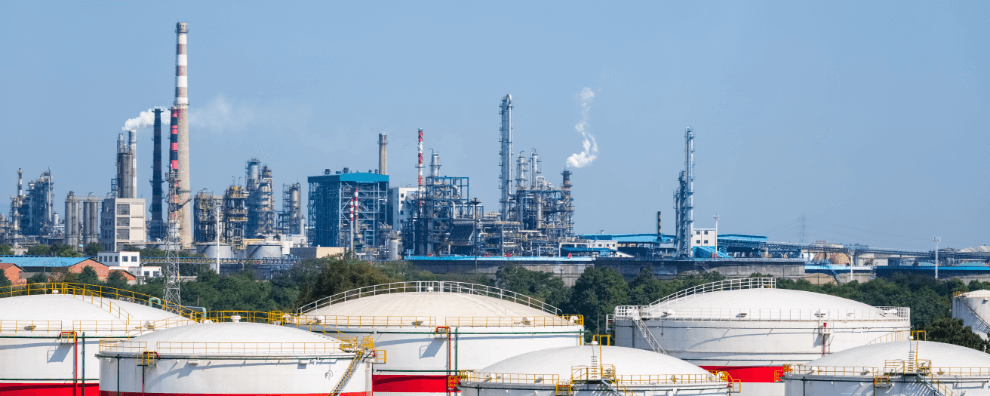
Written by J.C. Arènes
VP Sales & Service
Jan 2, 2024
In our ongoing Novatech technical blog series, we delve into the foundational elements of analytical instrumentation measurements, with a spotlight on the pivotal role of volumetric measurement. This technique, chiefly applied in gas analysis, transcends mere numerical representation. It embodies the essence of accuracy and precision, reporting gas concentrations as percentages or parts per million volume (ppmv).
Such measurements are not isolated figures but reflect a comprehensive view of the gas volume, whether measured in situ or extracted for analysis. This distinction is vital for achieving unparalleled precision and accuracy in measurements, underscoring the necessity of meticulously considering the sample gas’s physical properties.
What you’ll learn:
The essential principles of volumetric measurement in gas analysis and its critical role in ensuring analytical precision.
How environmental factors like water vapour content can drastically alter volumetric readings, illustrating the importance of accurate measurement techniques.
The intricacies of how sample pressure variations can influence volumetric measurements’ accuracy and pressure compensation’s necessity.
The impact of sample temperature on gas volume, demonstrating the thermal dynamics of gases and their effect on analytical readings.
Strategies for managing sample flow rate to avoid misleading volumetric measurements, ensuring consistent and accurate analytical outcomes.
Our discourse on wet versus dry measurement in a previous post touched on how alterations in the gas volume—such as the removal of water vapour—can significantly impact the volumetric reading of a target gas. Consider the scenario where a measurement of 5% Carbon Dioxide in a hot, wet flue gas with an 18% Water Vapour content undergoes dehydration, resulting in a recalibrated reading of 6.1% from an adjusted total volume. This example illustrates the profound implications of volumetric changes on concentration readings, a phenomenon well recognized within the industry, prompting the development of standard procedures to address these variances.
However, the journey to achieving flawless analytical readings is fraught with challenges, notably the subtle yet impactful variations in the physical properties of the sample gas. These changes, often mistaken for analytical noise or drift, underscore the importance of vigilance and adaptability in analytical practices.

Tired of Inconsistent Gas Analysis Results? Learn how mastering volumetric measurement can lead to breakthrough accuracy and reliability in your research.
Navigating the Trilogy of Analytical Challenges.
1. Sample Pressure Dynamics.
The operation and calibration of an analyzer are predicated on a stable pressure setting. Even minor fluctuations necessitate compensatory measures, especially for in-situ analyzers, to ensure the integrity of the readings remains intact. This principle is exemplified by altering Carbon Dioxide readings under varying pressure conditions, highlighting the intricate relationship between sample pressure and volumetric measurement.

Are You Ready to Navigate the Complexities of Temperature on Gas Volume?
Discover how to achieve precision despite thermal variations. Will you master the art of accurate volumetric readings?
2. The Thermal Effect on Sample Temperature.
The influence of temperature on gas volume, and consequently on volumetric readings, cannot be overstated. By expanding or compressing the gas, temperature variations introduce complexity to the measurement process, demanding precision and a nuanced understanding of gas behaviour under different thermal conditions.

Is your analysis at the mercy of Flow Rate Fluctuations? Discover how to master flow rate control and lock in precision with every measurement.
3. Flow Rate Considerations.
The consistency of the sample gas flow rate is integral to maintaining measurement accuracy. Fluctuations in flow rate can mimic volumetric changes in the sample cell, thus affecting the analyzer’s readings. This aspect of volumetric measurement calls for a meticulous approach to flow rate management.
Conclusion: The Path to Analytical Excellence.
The journey towards achieving definitive accuracy in process analysis is marked by a rigorous adherence to the analyzer’s design and operational conditions. The calibration and setup at the manufacturing stage lay the groundwork for on-site precision. However, the dynamism of on-site conditions necessitates a proactive approach to maintain this precision, emphasizing the importance of aligning with the physical properties of the sample gas.
At Novatech, our commitment to precision is unwavering. Our analytical experts are ready to address any challenges in sample handling and measurements, ensuring that our clients can place their trust in every reading. Through a deep understanding of volumetric measurement and its implications, we continue to lead the way in analytical accuracy, fostering confidence in the integrity of our analytical processes.

Be the first to read our articles

Written by J.C. Arènes
VP Sales & Service
Write to me at: arenesjc@novatech.ca

